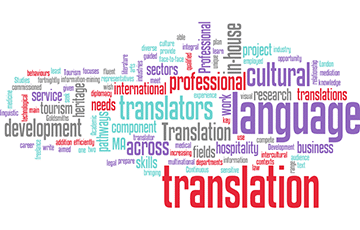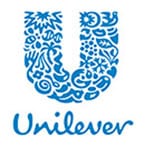Montevideo, Uruguay’s capital, is a major city along Montevideo Bay. It revolves around the Plaza de la Independencia, once home to a Spanish citadel. This plaza leads to Ciudad Vieja (the old town), with art deco buildings, colonial homes and landmarks including the towering Palacio Salvo and neoclassical performance hall Solís Theatre. Mercado del Puerto is an old port market filled with many steakhouses. Montevideo covers a total area of 201 square kilometres (77.5 square miles). The city has an average elevation of 43 meters (141 feet) above sea level. Its highest elevation is the peak of Cerro de Montevideo at a height of 134 meters (440 feet) above sea level.
Historical, Cultural facts & Religion
It lies on the north shore of the Río de la Plata estuary. Montevideo was founded in 1726 by Bruno Mauricio de Zabala, governor of Buenos Aires, to counteract the Portuguese advance into the area from Brazil. During its early years, Montevideo was mostly a Spanish garrison town. Uruguayan culture is a mix of European cultures, particularly Spanish, Portuguese and Italian, as well as influences from Africa, from indigenous peoples such as the Charrúa and Guarani, and from gaucho equestrian culture. The arts have an important role in Uruguay, both in the present and historically. In 1830, Uruguay’s constitution established Catholicism as the state religion. Montevideo, Uruguay’s capital, became a diocese in 1878 and an archdiocese in 1897. However, a new constitution in 1917 separated the church and state.
Brief City History
Montevideo, the principal city and capital of Uruguay. It lies on the north shore of the Río de la Plata estuary. Montevideo was founded in 1726 by Bruno Mauricio de Zabala, governor of Buenos Aires, to counteract the Portuguese advance into the area from Brazil. During its early years, Montevideo was mostly a Spanish garrison town. Trade expanded toward the end of the colonial period, and Montevideo’s merchants played an important part in securing Uruguayan independence. From 1807 to 1830 Montevideo was alternately occupied by British, Spanish, Argentine, Portuguese, and Brazilian forces, and its trade and population declined. Independence, which came in 1830, did not bring stability. Uruguay was the scene of a complicated interaction of local, Argentine, and Brazilian influences that culminated in the nine-year siege of Montevideo by a combined Argentine-Uruguayan army from 1843 to 1851. Montevideo’s defenders were assisted by French and English forces that blockaded Buenos Aires. Unexpectedly, Montevideo flourished during the siege and became the major port of the Río de la Plata.
The port of Montevideo handles most of Uruguay’s foreign trade. The chief exports are wool, meat, and hides. Numerous establishments in the capital process wool, and refrigerated packing plants are equipped to prepare meats. Textile, shoe, soap, match, and clothing factories are located throughout the city. Wines and dairy products also are produced. Uruguay’s well-known state enterprises, the ANCAP (Administración Nacional de Combustibles, Alcohol y Portland) oil refineries and cement works, railway shops, and electric power system are concentrated in Montevideo. The port is the hub of the city’s international transport. It is also served by an international airport at Carrasco. Four railroads converge on the city, and roads lead to other principal cities. Higher education in Uruguay is available only in the capital. The University of the Republic was founded in 1849. The Uruguay Workers’ University (1878) provides vocational training through industrial and night schools. Montevideo has had theatres since the Casa de Comedias opened in 1795, followed by the San Felipe Theatre. The Solís Theatre, still in existence, was opened in 1856. The city also houses the National Historical Museum (1900), the National Museum of Natural History (1837), the National Museum of Fine Arts (1911), and the National Library of Uruguay (1816). In addition to Batlle y Ordóñez Park, site of the football (soccer) stadium, recreational facilities include many other parks, as well as a line of beaches extending east to Punta del Este, on the Atlantic Ocean. The city is home to about two-fifths of all Uruguayans. Pop. (2011) 1,304,687.
Language (s) Written & Spoken
Montevideo street graffitti, Source The Spanish language in Uruguay, often referred to as Uruguayan Spanish or Uruguayan Castilian, is a variety of Spanish spoken in Uruguay and by the Uruguayan diaspora living in other countries around the world.
Important Types of Commerce in Montevideo
MAJOR INDUSTRIES: Agriculture, Cement, Fishing, Meat Processing, Oil Refining, Tanning and Leather Goods, Tourism, Wool and Textiles. MAIN EXPORTS: Canned Meat, Fish, Hides and Leather Goods, Meat, Rice.
Language Services US and others will provide working with Montevideo
Montevideo is becoming a multicultural province that has a growing need for professional translations and interpreters. Montevideo has a need for communication across languages and that is where language services can help. Whether you need Spanish driver’s license translation, Spanish marriage certificate translation, Spanish business document translation or Spanish legal document translation, Spanish medical document translation or n Spanish website translation, language services can help.
Looking for a Spanish translation company? Look no further. American Language Services (AML-Global) offers certified translations, native interpreting services, and turn-key localization solutions for any language. Call us today @ 1-800-951-5020 for further information, visit our website https://www.alsglobal.net/ or for a quick quote click http://alsglobal.net/quick-quote.php.
























